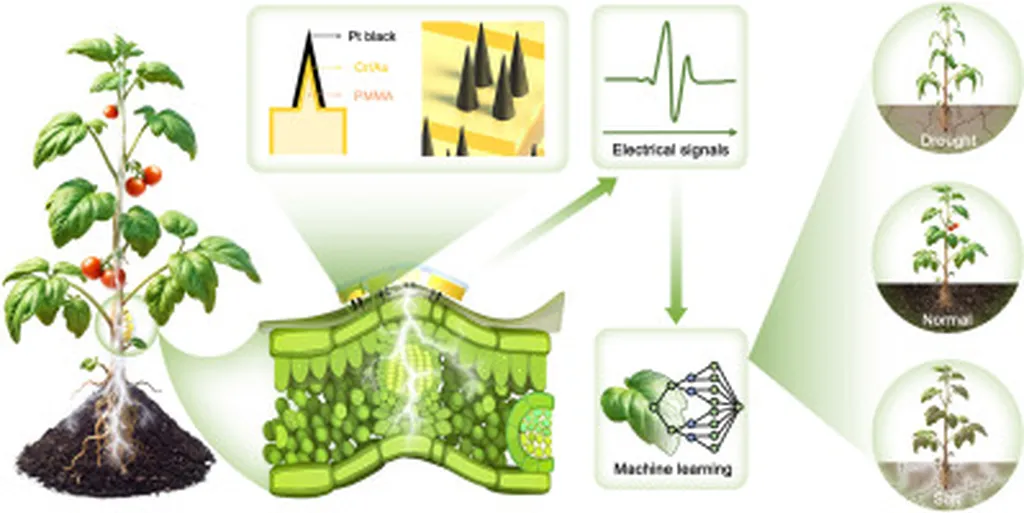In the heart of Jiangsu University, China, a team of researchers led by Shuang Zhang from the School of the Environment and Safety Engineering has pioneered a novel approach to monitoring wheat stress that could revolutionize precision agriculture. Their work, published in the journal *Agronomy* (translated from Chinese as “Field Management Science”), focuses on decoupling water and nitrogen stress in wheat using advanced machine learning techniques and electrophysiological signals.
Wheat, a staple crop worldwide, is increasingly vulnerable to climate change, with water and nitrogen stress posing significant threats to productivity. Traditional methods of monitoring these stresses often fall short, either due to invasiveness or lack of real-time data. Zhang and her team sought to address this gap by developing a framework that leverages multimodal leaf electrophysiological signals—including intrinsic resistance, impedance, capacitive reactance, inductive reactance, and capacitance—to provide a non-invasive, real-time diagnostic tool.
The team employed a parallel modeling strategy, utilizing Gradient Boosting, Random Forest, and Ridge Regression algorithms. Each algorithm was selected based on its predictive performance for specific features, allowing for a tailored approach to stress detection. “We found that impedance (IZ) was the most sensitive biomarker across different leaf positions, indicating its potential for detecting ion flux perturbations under abiotic stress,” Zhang explained. This finding underscores the importance of impedance as a key indicator of stress in wheat plants.
The research also revealed that different algorithms excelled in different contexts. Ridge Regression proved superior in modeling linear responses due to its noise suppression capabilities, while Gradient Boosting effectively captured nonlinear dynamics. This algorithm-feature specificity highlights the complexity of plant stress responses and the need for sophisticated analytical tools.
One of the most compelling findings was the stability of predictions made using flag leaves during the reproductive stages of wheat, compared to third leaves during vegetative stages. “Flag leaves, as the primary source organs, provided significantly more stable predictions,” Zhang noted. This insight aligns with the physiological importance of flag leaves in wheat productivity and opens new avenues for targeted stress monitoring.
The implications of this research for precision agriculture are profound. By providing a robust, non-invasive method for real-time water and nitrogen stress diagnostics, this framework could enable farmers to make data-driven decisions, optimizing resource use and enhancing crop yields. In an era of climate change and resource scarcity, such tools are invaluable for ensuring food security and sustainability.
Looking ahead, this research could shape future developments in plant stress monitoring and precision agriculture. The integration of machine learning and electrophysiological signals offers a powerful approach to understanding and mitigating the impacts of abiotic stress on crops. As Zhang and her team continue to refine their framework, the potential for widespread adoption in the agricultural sector grows, promising a more resilient and productive future for wheat cultivation.
In the rapidly evolving field of agritech, this work stands as a testament to the power of interdisciplinary research, combining plant physiology, machine learning, and precision agriculture to address some of the most pressing challenges in modern farming.

